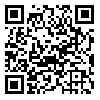Fri, Dec 5, 2025
| فارسی
Volume 19, Issue 2 (Summer 2017)
Advances in Cognitive Sciences 2017, 19(2): 19-29 |
Back to browse issues page
Download citation:
BibTeX | RIS | EndNote | Medlars | ProCite | Reference Manager | RefWorks
Send citation to:



BibTeX | RIS | EndNote | Medlars | ProCite | Reference Manager | RefWorks
Send citation to:
shafiee H, Zare H, Alipor A. Construction and Validation of Computer Program of
Attention Bias Modification Treatment for Social Anxiety
Disorder. Advances in Cognitive Sciences 2017; 19 (2) :19-29
URL: http://icssjournal.ir/article-1-535-en.html
URL: http://icssjournal.ir/article-1-535-en.html
1- Assistance professor of Psychology Department, Payame Noor University
2- Professor of Psychology Department, Payame Noor University
2- Professor of Psychology Department, Payame Noor University
Abstract: (3982 Views)
Introduction: Social anxiety is a common mental disorder. Cognitive theories of social anxiety considered attention bias as an etiological and maintaining factor in social anxiety. Cognitive bias modification (CBM) is an experimental paradigm and an innovative approach to modifying cognitive biases. Attention bias modification (ABM) protocols represent one of a number of cognitive bias modification techniques, which are beginning to show promise as therapeutic interventions for emotional pathology. This study introduces computer program of attention bias modification treatment (ABMT) and the construction process and examination of the reliability and validity of this program.
Method: The reliability of faces used in computerized attentional bias modification program, was examined by 120 students. Validity of computer program of attention bias modification was examined in two groups (n=16) of adolescents with social anxiety disorder.
Results: The results indicate the high reliability and validity of computer program of attention bias modification and faces used in it. Implementation of this program on adolescents with social anxiety disorder showed differential validity of this technique and its ability to reduce social anxiety and attentional bias.
Conclusion: The current results clearly suggest that use of computerized attention training procedures can be a promising alternative complementary intervention in changing attentional bias and social anxiety.
Method: The reliability of faces used in computerized attentional bias modification program, was examined by 120 students. Validity of computer program of attention bias modification was examined in two groups (n=16) of adolescents with social anxiety disorder.
Results: The results indicate the high reliability and validity of computer program of attention bias modification and faces used in it. Implementation of this program on adolescents with social anxiety disorder showed differential validity of this technique and its ability to reduce social anxiety and attentional bias.
Conclusion: The current results clearly suggest that use of computerized attention training procedures can be a promising alternative complementary intervention in changing attentional bias and social anxiety.
Keywords: Social Anxiety Disorder (SAD), Cognitive Bias Modification (CBM) Attentional Bias Modification (ABM), Attention Training, Treatment
Type of Study: Research |
Subject:
Special
Received: 2016/11/6 | Accepted: 2017/03/4 | Published: 2017/06/22
Received: 2016/11/6 | Accepted: 2017/03/4 | Published: 2017/06/22
Send email to the article author
| Rights and permissions | |
 |
This work is licensed under a Creative Commons Attribution-NonCommercial 4.0 International License. |



